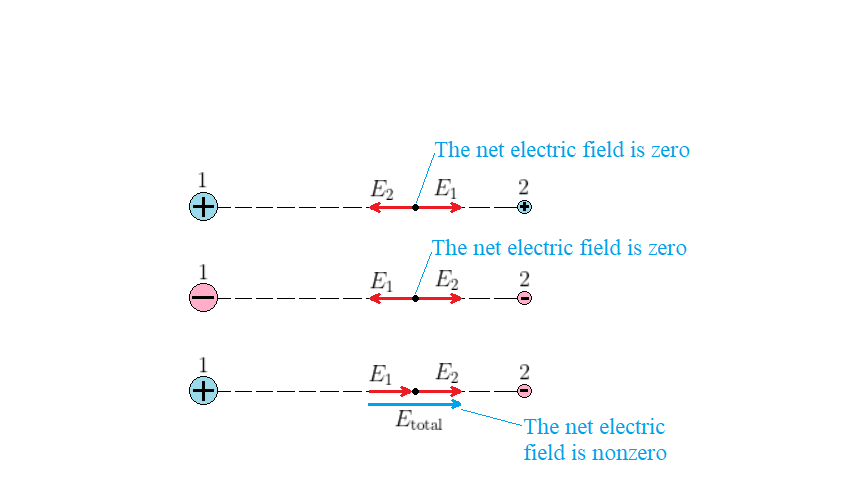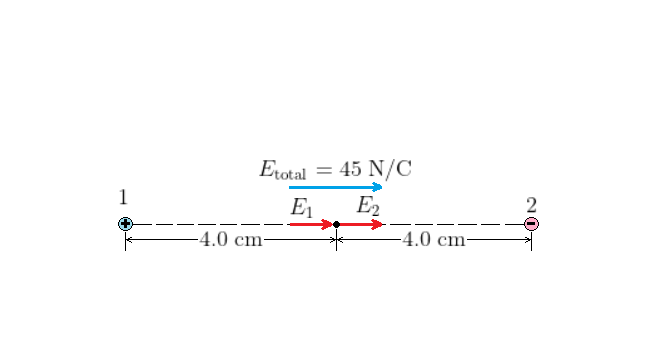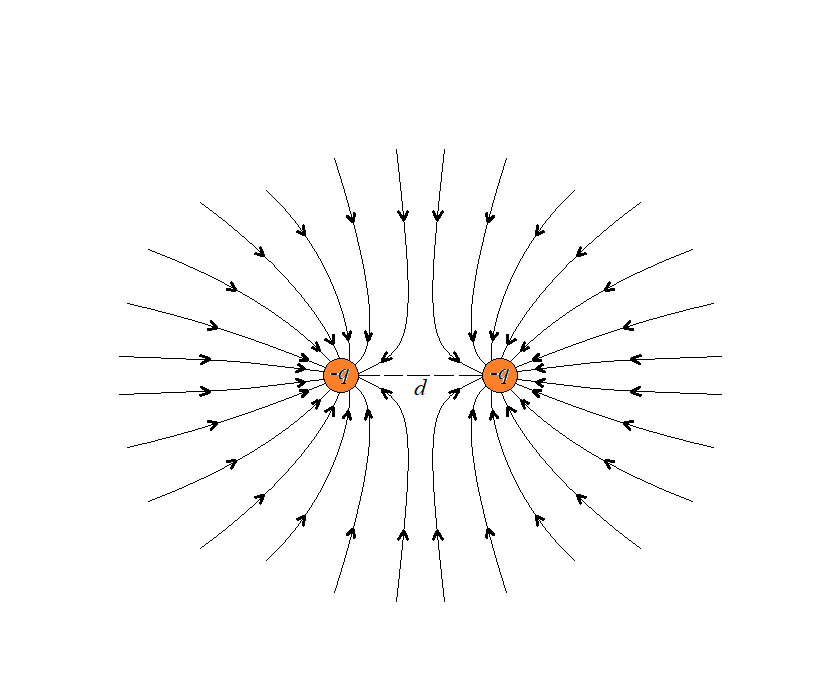
All Solutions
Page 717: Lesson Check

$$
begin{align*}
E &= kfrac{|q|}{r^2}\
&= (8.99times10^9;mathrm{N}cdotmathrm{m}^2/mathrm{C}^2)frac{5.00times10^{-6};mathrm{C}}{(1.00;mathrm{m})^2}\
&= 4.50times10^4;mathrm{N/C}
end{align*}
$$
$textbf{(b)}$ Applying $E = k|q|/r^2$ with $q = 5.00;mu$C and $r = 2.00$ m yields
$$
begin{align*}
E &= kfrac{|q|}{r^2}\
&= (8.99times10^9;mathrm{N}cdotmathrm{m}^2/mathrm{C}^2)frac{5.00times10^{-6};mathrm{C}}{(2.00;mathrm{m})^2}\
&= 1.12times10^4;mathrm{N/C}
end{align*}
$$
$$
E = kfrac{|q|}{r^2}
$$
where $|q|$ is the magnitude of the charge producing the electric field. Solving for $r$ and substituting the known values, we find
$$
begin{align*}
r &= sqrt{frac{k|q|}{E}}\
&= sqrt{frac{(8.99times10^9;mathrm{N}cdotmathrm{m}^2/mathrm{C}^2)(11times10^{-6};mathrm{C})}{9.3times10^4;mathrm{N/C}}}\
&= 1.0;mathrm{m}
end{align*}
$$
$textbf{(b)}$ The electric fields produced by the charges 1 and 2 at the midpoint on the line connecting them have the same magnitude $(E_1 = E_2)$, as the two charges have equal magnitudes and are the same distance from the midpoint (remember that $E = k|q|/d^2$). Because the total electric field is given by $E_{rm total} = E_1 + E_2$, we have
$$
E_1 = E_2 = frac{E_{rm total}}{2} = frac{45;mathrm{N/C}}{2} = 22.5;mathrm{N/C}
$$
Appling $E_1 = k|q|/d^2$, with $E_1 = 22.5$ N/C and $d = 4.0$ cm (see the sketch below) and solving for $|q|$, we find
$$
begin{align*}
|q| &= frac{E_1d^2}{k}\
&= frac{(22.5;mathrm{N/C})(4.0times10^{-2};mathrm{m})^2}{8.99times10^9;mathrm{N}cdotmathrm{m}^2/mathrm{C}^2}\
&= 4.00;mathrm{pC}
end{align*}
$$

$textbf{(b)}$ 4.00 pC

Haven't found what you were looking for?
Search for samples, answers to your questions and flashcards

